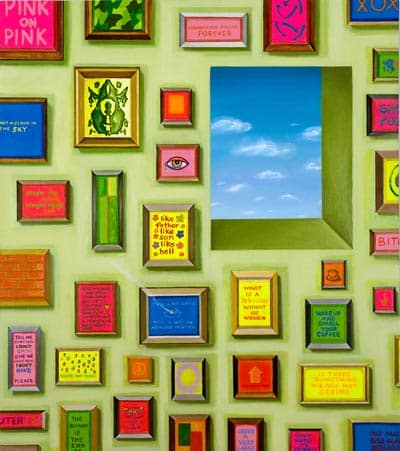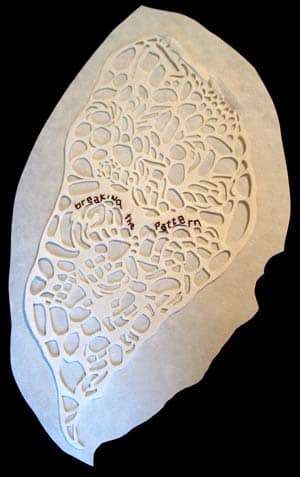by Arlene Goldbard
Citizenship. What with the errors and omissions of cartoon democracy and fervid anti-immigrant agitation, the word has become rather vexed. But it still rings a large and slightly cracked bell. I want to deploy its resonant peal in the service of a much deeper and more important type of belonging: cultural citizenship.

In a situation of true cultural citizenship, each of us—regardless of legal status—is able to experience meaningful belonging, participation and mutual responsibility. In a situation of true cultural citizenship, people learn about each other’s heritages, respect each other’s contributions to community life and public discourse, feel welcome in their own city or town. In a situation of true cultural citizenship, it is understood that all of us together craft the story that supports our collective resilience and ability to thrive—or else we fall prey to competing stories of triumphal superiority and bitter scapegoating, and in the end, no one thrives.
What are the essential skills of cultural citizenship? They are three habits of mind and heart that can be learned, and the best way to learn every one of them is through artistic practice. In Community, Culture and Globalization, an anthology I co-edited, Judy Baca, artist and founder of Los Angeles’ Social and Public Arts Resource Center, tells a story I love, because it embodies all three. It’s about the origins of The Great Wall of Los Angeles, the world’s largest mural, painted by crews drawn from youth gangs. The Great Wall runs for over half a mile in the Tujunga Wash, a concrete flood-control channel that divides the community, carrying pollution to the sea. Building it displaced indigenous and Mexican residents, creating an eyesore. Over several decades, the mural has changed that, portraying the buried history of California and its people, the stories that promote cultural citizenship but seldom make it into official histories. When The Great Wall first began to take shape in Judy’s mind, she thought of a former gang leader who’d worked on her earliest mural team.
“Fernando,” she writes, “a charismatic leader from the original Las Vistas Nuevas team, was brutally stabbed in his own neighborhood’s local store…. He suffered 13 wounds to his torso and one to his face…. I asked him after he had healed how he was doing with the psychological scars left by such an attack and he responded, ‘The worst thing is that every time I remove my shirt my body is a map of violence.’ It was for this reason that I proposed and designed a series of tattooed images to cover and transform the scars on his body.
“Standing at the river on that first day, dreaming of what it could become, I saw the concrete as a scar where the river once ran and our work in the channel producing the narrative mural, as a tattoo on the scar. The defining metaphor of what came to be known as the Great Wall of Los Angeles…became ‘a tattoo on the scar where the river once ran.’”
The essential skills of citizenship are imagination, empathy and presence:
Imagination. Every act begins in imagination, which enables us to envisage change. Without social imagination, our notion of the possible is constrained. These days, when I talk to funders, policymakers—even student groups—about new ideas for cultural development, the first thing they typically want to know is where these ideas are already proven to work. They are reluctant even to consider an untried idea, which seems to me a failure of imagination. What if this same yardstick were used to gauge the potential value of new technology? We’d still be communicating by Pony Express! Yet in civil society today, the already-done thing has a firm grip on our willingness to experiment. So many agencies and organizations, despite strong commitments to caring and equity, are afraid to fail in new ways—to try new things and take new risks—although they are evidently willing to fail in the same old ways, over and over again.
We feel the music in our blood, find ourselves dissolved in the story, swallow color with our eyes
I am inspired by Marty Pottenger’s Arts and Equity Project, through which artists work with police officers and other public employees in Portland, Maine, deploying the skills and approaches of art to humanize their tasks and connect with their neighbors. Long experience has revealed how difficult it is to bridge the gap between police offers and those they have pledged to serve and protect; the usual leaflets and public presentations don’t do it. Now that the project is going national, it will be interesting to see how many municipal leaders are willing to take the risk of trying art.
We cultivate imagination more fully and deeply through art than any other means. Art allows us see an abused river as a human body suffering the aftermath of violence, and to create something that illuminates and enlarges both meanings. By sharing stories, making music, immersing ourselves in the sounds and images of other worlds, we build our capacity for imagination. We exercise the muscles of possibility, preparing ourselves for whatever comes next.
Empathy. To act with care and to be effective, every citizen—in fact, every member of a community, a family, an organization—needs a developed dual consciousness. We have our closely held self-interests, and our sense of the common good. There is no true citizenship unless we master the skill of toggling back and forth between the two, putting ourselves in the place of the other, feeling compassion for other’s dilemmas and pains. Without empathy, people who are different from ourselves become things, dismissible—even disposable—for our convenience. Without empathy there is no community, no polity, just a crowd.
We learn empathy through art. When we laugh at the victories or cry at the suffering of a character on stage or screen, it is not because we have formed a deep, caring attachment for the person depicted there, but because empathy enables us to experience the same sensations and emotions. When we speak another’s words or see the world through another’s eyes—when, for instance, we feel what it is for one’s body to be a map of violence—we glimpse what is otherwise foreclosed. The distance between ourselves and others closes up, and we place the other’s interests beside our own, as worthy of attention and concern.
Right now, when the United States is the world’s biggest jailer, with more people in prison, on parole, and on probation, and a higher incarceration rate than any other nation, many artists are addressing the daunting challenge of cultivating empathy for those affected by the prison system. Through film, theater, music, writing and other arts media, they are trying to help us feel the impact on our communities, commonwealth, and spirits of having become Incarceration Nation. Thousand Kites is one a great example. The Philadelphia Mural Arts Program’s Restorative Justice projects offer another. Judith Tannenbaum’s and Spoon Jackson’s new book, By Heart: Poetry, Prison and Two Lives is a third.

Presence. Both empathy and imagination fall short if they cannot encompass the whole person, fully present in body, emotions, mind, and spirit. So long as the worst sin a woman can commit in a boardroom is to cry, so long as we train ourselves to suppress the information our brains transmit through physical sensation and attend only to what we are supposed to notice, so long as we cannot share spiritual sensation and practice with the same ease as we can share ideas and analysis, our capacity to experience full cultural citizenship is impaired. Consider just one example: how for generation after generation, well-intended planners have worked long and hard to design public housing they would reject as habitation for their own families after even an hour of direct, embodied experience. In an essay I’ve contributed to a forthcoming anthology, What We See: Advancing the Observations of Jane Jacobs, I take a focused look on the mistakes city planners make when intellect guides choices uninformed by feeling and spirit.
We learn to be wholly present more fully by making art than through any other means. In the full flow of creativity, we experience the generative spirituality that is at once divine and deeply human. We feel the music in our blood, find ourselves dissolved in the story, swallow color with our eyes the way a parched throat welcomes water. As in Judy Baca’s story, these sensations invade our dreams, re-emerging as art.
There can be no better preparation for the full exercise of deep and meaningful citizenship than entering into the realm of art. This way of learning has never been needed more. As we face economic crisis, political polarization, epidemic fear and disappointment, we need the resilience that sustains communities in times of crisis. This is always rooted in culture, in the tales of persistence and social imagination that inspire people to a sense of possibility even in the hardest times. Artists expand social imagination, helping us envision the transformations we hope to bring about, stimulating our thoughts and feelings toward the new attitudes and ideas that can drive recovery and nurture a sustainable society.
Mainstream arts advocates have been trying to pour the vast personal and social importance of art into containers—into language, slogans, arguments, strategies—far too small to hold it. That is why I have dedicated myself to helping us reframe the public interest in culture expansively enough to encompass its real functions, including its role as a teacher of true citizenship.
Arlene Goldbard is a writer, speaker and consultant based in the San Francisco Bay Area who works at the intersection of culture, politics and spirituality. Her blog and other writings may be found at her Web site. She also serves as President of the Board of The Shalom Center. For further reading, please see Art & The Public Purpose: A New Framework for a simple public policy proposal that would help support our capacity to create and share the stories we need now; and Arlene’s Web site for many talks and essays available for download.
